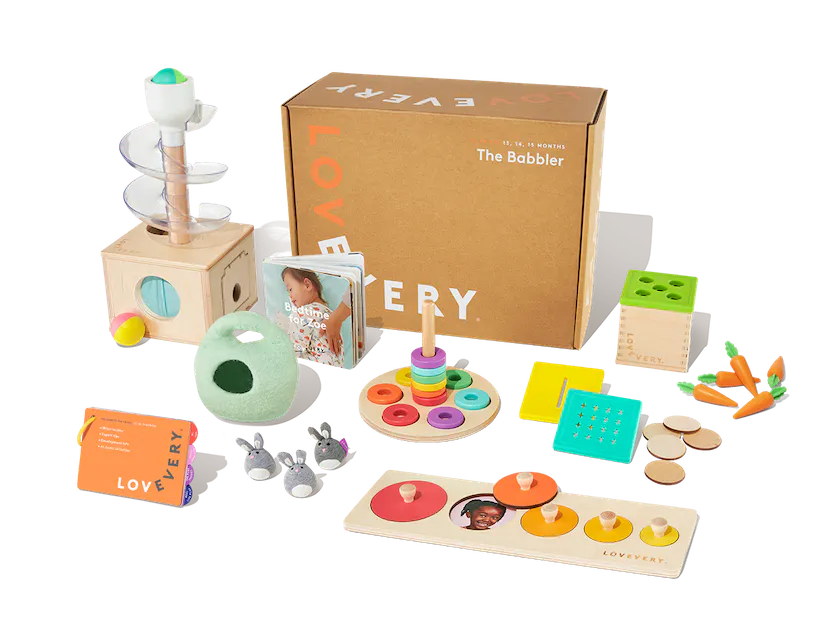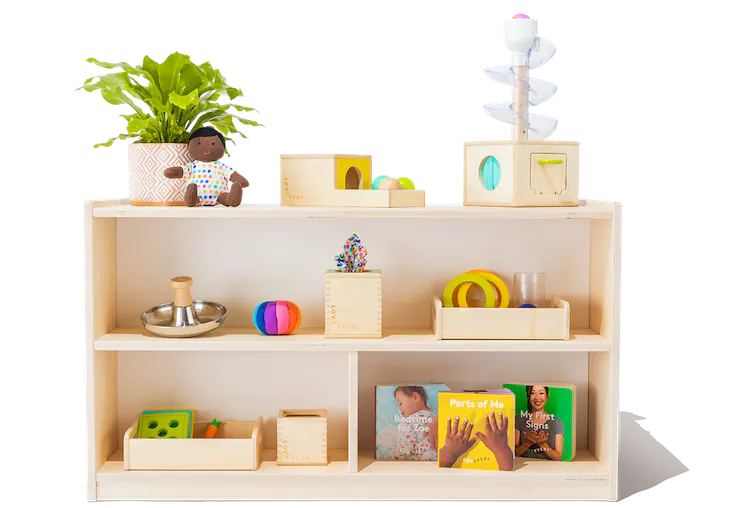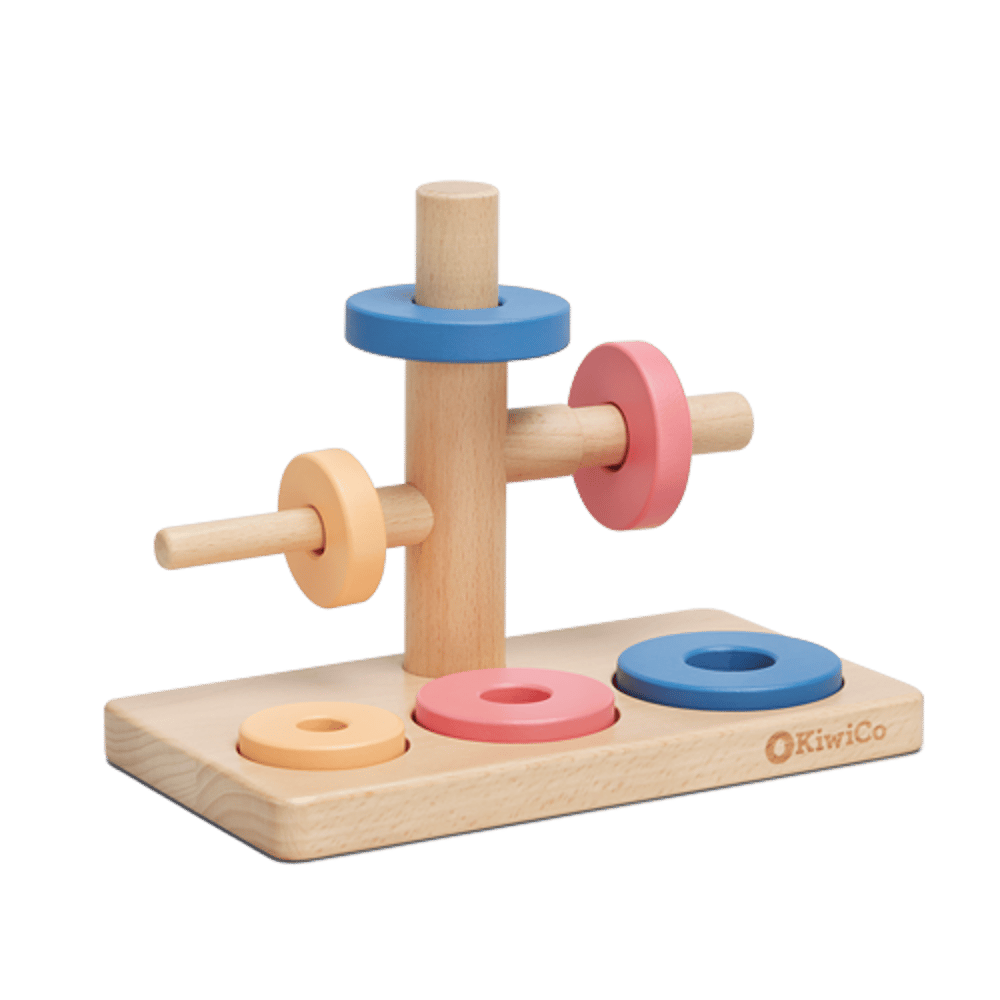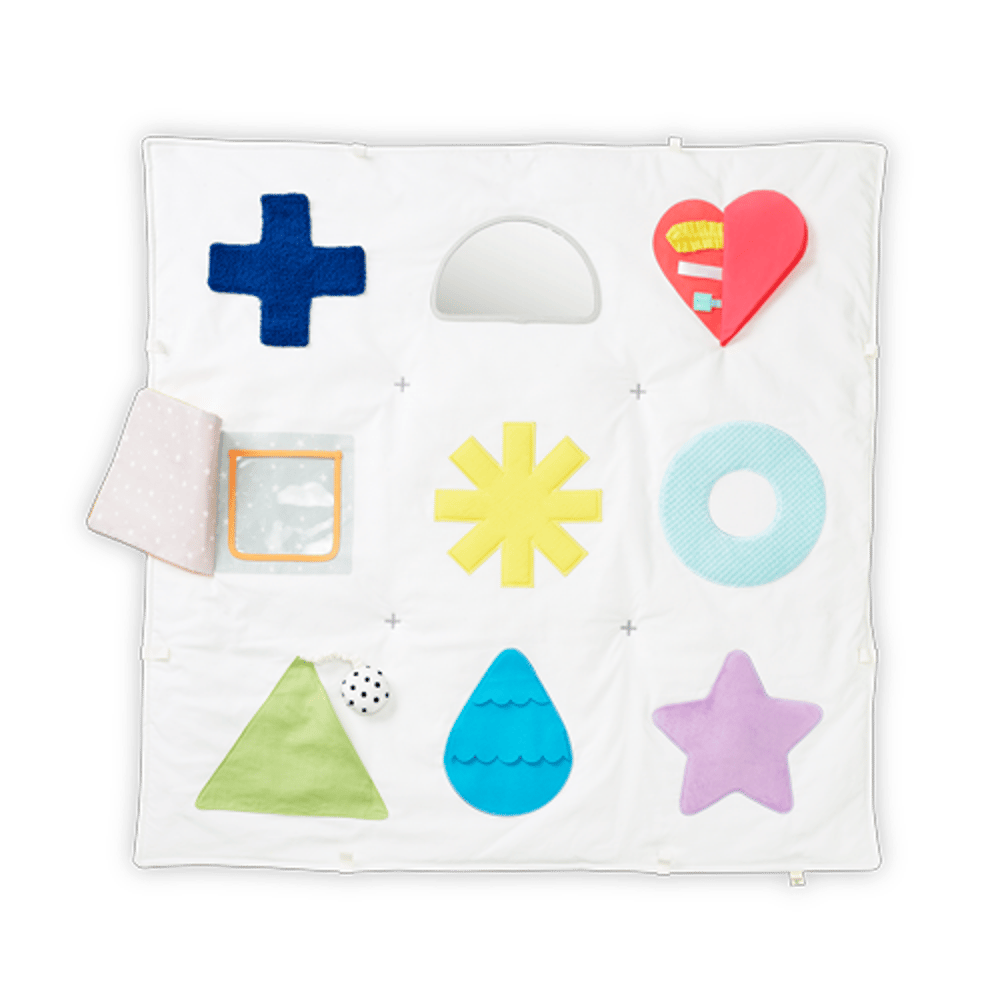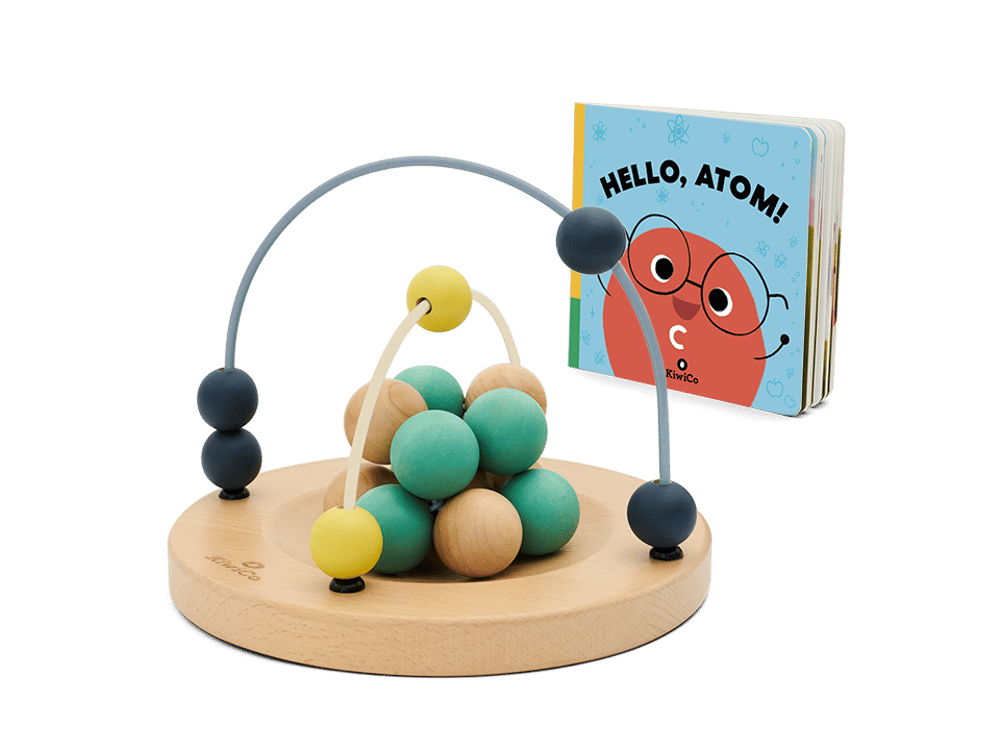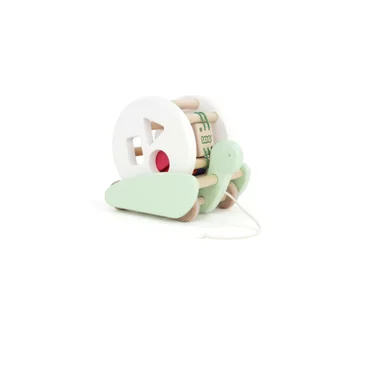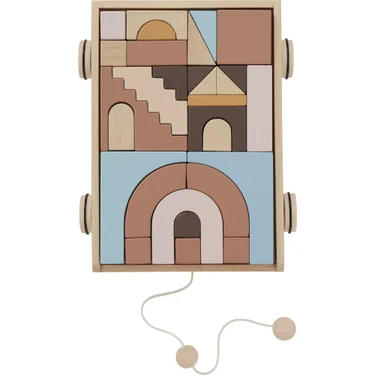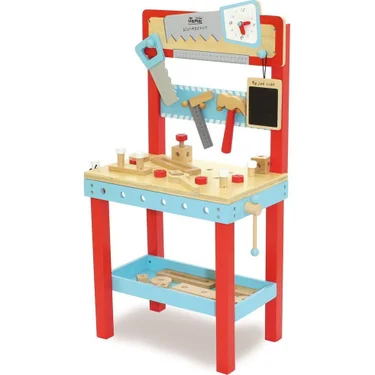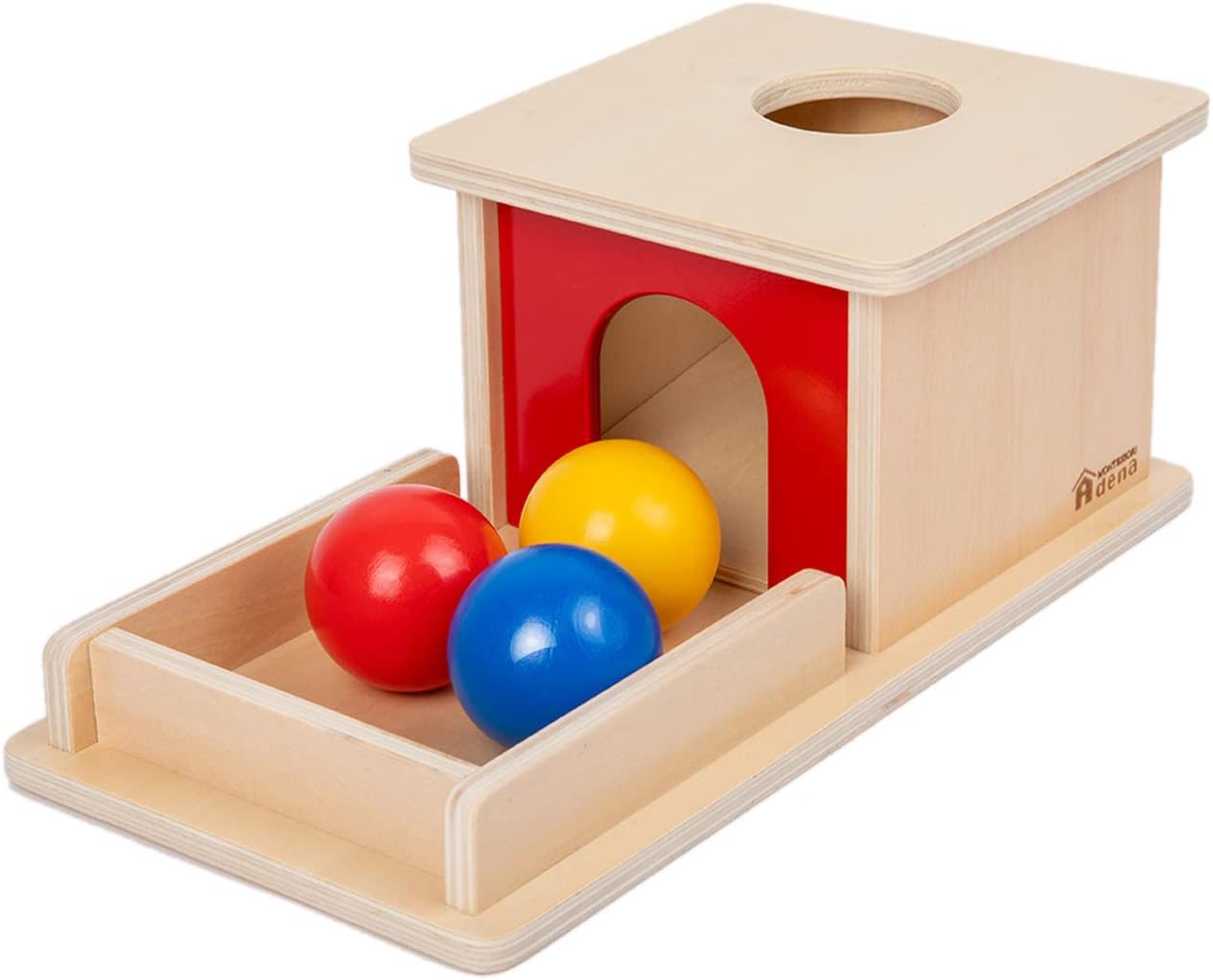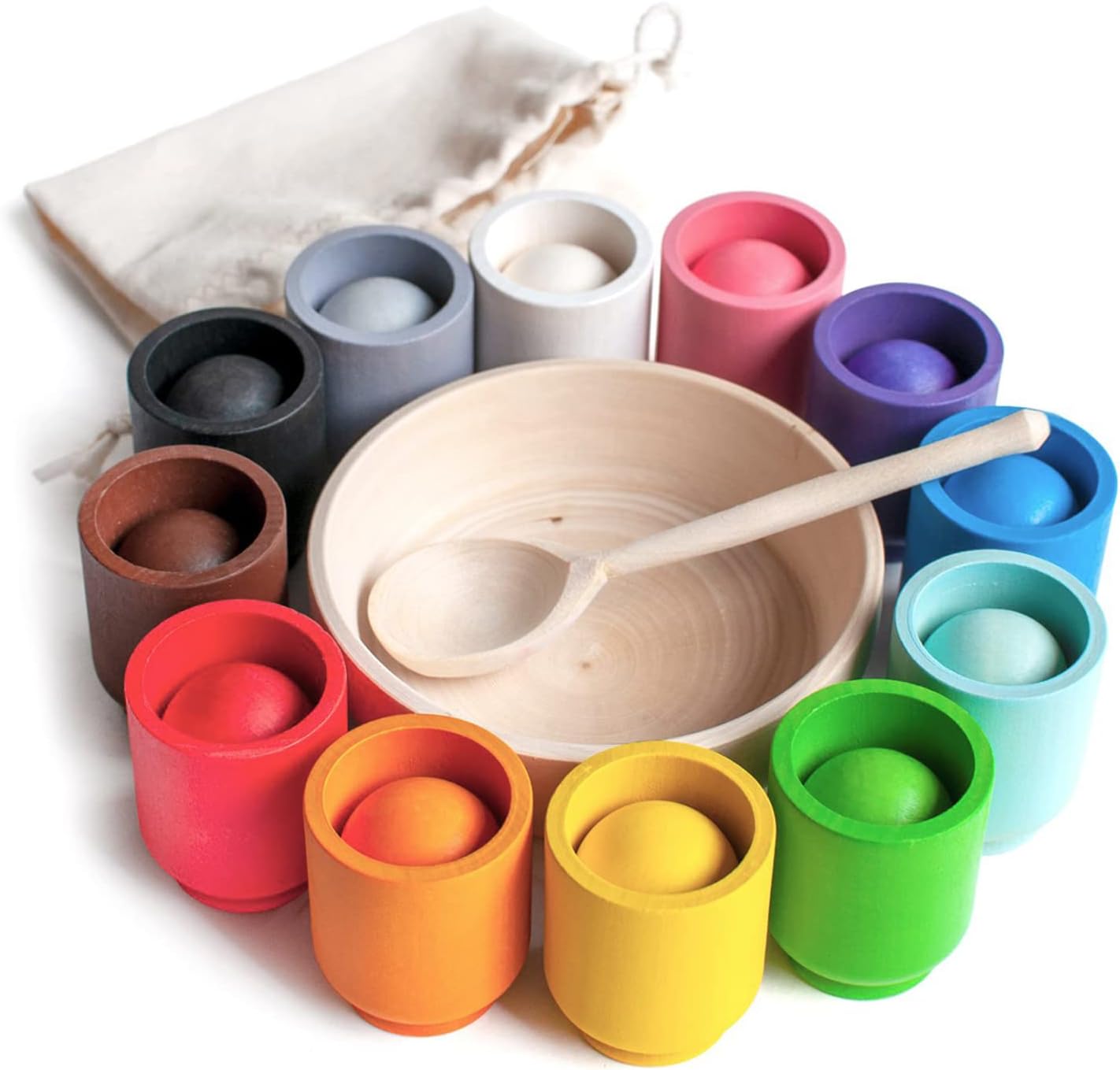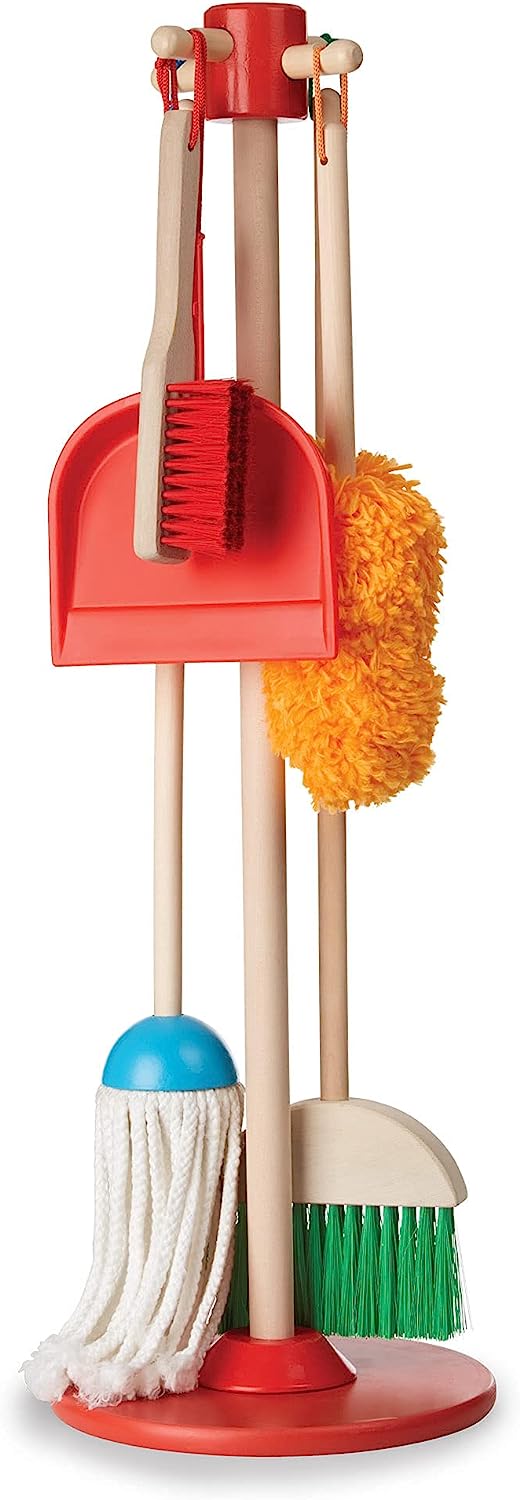What Kind Of Toys Are Montessori & What Are Their Benefits?
These types of toys follow the Montessori approach, a child-focused philosophy created in the early 1900s by Dr. Maria Montessori, an Italian psychiatrist and pediatrician. (1)
Often, Montessori toys are made of natural materials like wood, designed for open-ended play, and teach practical life skills. They’re also rooted in reality and are designed with objects from the real world instead of fantasy.
You won’t find Disney princess dolls or dragon figures in Montessori materials. Instead, you can find toys for hands-on practical skills such as cooking, baking, cleaning, and washing, even in kits designed for young children.
Many parents wonder why these toys look so simple yet are often more expensive than other learning toys.
These simple toys are thoughtfully crafted and designed for optimal child development. They also tend to be made from high-quality materials. When used in Montessori classrooms or even at home with guidance, these toys can help improve your little one’s cognitive skills.
Association Montessori Internationale shares this Maria Montessori quote from “The 1946 London Lectures”: (2)
“I found that they [little children] used the material with great attention and for a long time; they showed interest, a spontaneous interest.
But why were they so interested? Why did they work with this material for such long periods?
Evidently it was because they needed to develop something fundamental.”
This kind of learning appears to have an impact on children’s future.
A 2021 Frontiers in Education study showed that Montessori education can lead to better adult well-being, especially in these factors: (3)
- Self-confidence
- Engagement
- Social trust
- General well-being
What makes Montessori learning toys different, what are their characteristics, and which ones are best for your baby or child’s development?
Let’s discuss more about these below.
Montessori Gift Guides For Young Children
- DIY Montessori toys
- Montessori baby toys
- Montessori climbing toys
- Montessori toys
- Montessori toys for toddlers
- Montessori toys for 1-year-olds
- Montessori toys for 3-year-olds
- Montessori toys for 4-year-olds
- Montessori wooden toys
What Are Real Montessori Toys? 7 Characteristics
Are real Montessori toys designed by Maria Montessori?
Well, not exactly. There isn’t a specific list of toys recommended by Maria Montessori. Instead, Montessori toys meet the criteria based on the Italian doctor’s educational philosophy (see our list below).
Toys that align with the Montessori philosophy can still be considered Montessori-inspired toys.
For example, the Pikler triangle wasn’t designed by Montessori but is often considered a Montessori climbing toy because it meets the criteria.
Presently a lot of families choose flexibility when it comes to creating a Montessori home. Always trust your intuition and do what you feel is right for your family.
The following are the most common characteristics of Montessori toys:
1. Natural Materials & Based On Real-Life (Not Imaginary Toys)
Most Montessori toys are made using natural materials. You can’t find any electronics, even in modern times. There aren’t any interactive components that create an artificial sound or light.
Are Montessori Toys All Wooden?
The Montessori method is often associated with wooden toys, but metal and fabric are also used.
Metal is a good choice for your child to learn science concepts, especially because it can be cold to touch at first but warms as they continue to play with the toy.
Why Are Montessori Toys So Plain?
The toys are plain because the Montessori philosophy promotes learning using things based on the real world. It’s not just because there weren’t many electronic toys when the Montessori method was designed.
For example, a wooden block can provide your little one with more information about real-life textures, weight, and smell than a plastic block, which is lighter, smoother, and can even have toxic chemicals.
2. Simple But Beautiful
Montessori toys are simple and uncomplicated, yet they also look elegant and beautiful.
That’s because these toys are made of high-quality materials with natural oils or waxes used to create stains or colors.
These natural oils give the toys a more natural feel and can also keep your child from lead exposure, which they can get in some painted toys. For example, there’s a long list of recalled toys due to lead issues.
Lead can cause serious developmental issues, brain and nervous system damage, and speech or hearing problems. (4)
3. Limited Play Choices (One Skill At A Time)
Montessori education uses open-ended toys that can develop your child’s problem-solving skills, hand-eye coordination, fine motor skills, gross motor skills, and other learning skills.
However, these toys are often designed to develop one skill at a time.
Having limited play choices can enhance your child’s concentration and let them play independently instead of getting too distracted by the many things they can do with a more complicated toy.
When your child focuses on one toy, they can benefit from its educational value and purpose. And also learn to develop one-pointed focus and concentration from early on.
4. Practical, Purposeful, & Useful
Montessori toys also teach life skills. They’re practical and useful to let your child understand the real world.
Each toy is also useful for learning a skill or specific educational purpose.
5. Made For A Particular Age
Did you know that playing isn’t just for having fun but is also a fundamental part of your child’s education? (5)
Still, children have a shorter attention span, making them easily bored. A 1994 Professional Care of Mother and Child journal study suggests choosing toys that are right for your child’s stages of development. (5)
By doing this, you are choosing toys that are challenging enough for their age without being too difficult for them to figure out. (5)
That’s why subscription boxes or kits from Montessori-inspired toys from brands like LOVEVERY and KiwiCo are available for specific age groups.
Here’s another Maria Montessori quote from “The 1946 London Lectures”: (6)
“There are different periods in life when we can acquire different abilities. Little children can do things that older ones are no longer capable of.
Children from birth to six years have a power that we no longer have, for they are at the age of creation.”
6. Open-Ended & Designed For Independent Play
Montessori toys are designed for independent play and learning.
They’re used as learning materials in Montessori classrooms. However, the teachers in Montessori classrooms encourage children to: (3)
- Choose the activities they want to do (child-directed, self-led)
- Collaborate with their peers (promote social and personal development)
- Use real and hands-on materials
Maria Montessori also said in “The 1946 London Lectures”: (7)
“We must proceed, not on the basis of our own ideas or on our own prejudices, not on preconceived methods, but by observing the child.”
7. Motivate STEM Learning
The best Montessori toys might look simple, yet they are also designed for STEM learning (science, technology, engineering, and mathematics) and developing critical thinking.
For example, an object permanence box lets your child experiment with a wooden ball that they drop in a hole. Instead of disappearing inside the box, however, the ball can roll out through another hole.
Other toys show cause-and-effect relationships, science concepts like gravity and volume, or help them learn basic, age-appropriate counting and language skills.
Are Montessori Toys Necessary?
You don’t have to strictly follow the Montessori method or use Montessori-specific toys and materials.
Association Montessori Internationale also shares the following Maria Montessori quote from “The 1946 London Lectures”: (8)
“Everyone said it was my marvelous method which gave this ability to children, and everyone was enthusiastic about it.
However, it was neither the school nor the method which produced this phenomenon. It was the expression of the power of the small child and it was a revelation of something that had hitherto remained unknown.
The important thing was the discovery of the surprising power of the young child.”
Are Montessori Toys Better Than Other Toys?
Not exactly. While Montessori toys promote cognitive learning and independence, there are no studies that measure whether a specific toy or learning method is better than others. (1)
Montessori toys can be better in other aspects, but your child can also learn using other toys. Different kids can have varying learning needs, depending on their development.
What Are The Best Montessori Toys By Age?
We’ve prepared this gift guide of Montessori and Montessori-inspired toys you can give your children, depending on their age.
Babies
Some examples of Montessori toys for babies:
- Montessori play gym with high-contrast, interchangeable mobile
- High-contrast (black and white) picture books
- Wooden rattles
- Textured balls
- Soft balls
- Musical instruments (e.g., wooden drums)
- Baby-safe mirror
- Montessori play mat for tummy time
Toddlers & 1-Year-Olds
Some examples of Montessori toys for 1-year-olds and toddlers:
- Object permanence box
- Stackers
- Wooden puzzles
- Vocabulary cards
- Simple baby books (e.g., high-contrast colors or one object per page)
- Practical life activities (e.g., cleaning tools or outdoor garden tool set)
- Knobbed cylinders
- Hammer-style toys
- Pull toy
- Push toy
- Figurines of real-life animals or objects
- Montessori climbing toys, Pikler triangles, and climbing arches
Preschoolers
Here are some Montessori toys for your preschooler:
- Age-appropriate subscription boxes
- Montessori toys for gross motor skills (e.g., balance boards, balance beams, balance bikes, etc.)
- Montessori sensory toys
- DIY Montessori toys
- Pegboard set
Older Kids
Montessori wasn’t able to develop her educational system for 12-18-year olds during her lifetime. Still, many Montessori schools (and toys) are currently available for children ages 3-6 and 6-12. (1)
You might also be surprised that your older kids can still find new ways to play with wooden building blocks or stacking toys.
Pros & Cons Of Montessori Toys
Pros
- Provide learning opportunities
- Develop skills
- Safer choices (made of natural, non-toxic materials)
- Teach independence
- Fosters cognitive development and social skills
Cons
- Can be pricey
- Some parents might consider them too simple or boring, especially for their price tag
FAQs
Where Can I Buy Montessori Toys?
Some places to get Montessori toys and materials (or Montessori-inspired toys):
Lovevery
The Babbler Play Kit (13-15 months)
The Block Set (not indicated)
The Montessori Playshelf (not indicated)
Hape
Hape Counting Stacker (12+ months)




Hape Rainbow Pounder (12+ months)
Hape Arctic Polar Bear Stacking Blocks (2+ years)
KiwiCo
Slide-and-Stack Ring Puzzle (0+ years)
Grow-With-Me Sensory Play Mat (0+ years)
Atom Bead Maze (0+ years)
Maisonette
Bajo Snail Sortroller Mini (not indicated)
Oyoy Wooden Rainbow Wagon with Blocks (not indicated)
Indigo Jamm Little Carpenter’s Bench (not indicated)
Amazon (e.g., Ulanik)
Adena Montessori Object Permanence Box (6-12 months)
Ulanik Balls in Cups Montessori Toy (1+ years)
Melissa & Doug Let’s Play House Dust! Sweep! Mop! (3+ years)
What’s The Design Of A Montessori Playroom?
- Promotes independence
- Simple but with purpose
- Beautiful
- Freedom but with certain rules & limits (e.g., children must learn to keep their toys after playing)
Are Montessori Toys The Only Educational Toys I Can Count On?
No. Plenty of educational toys can provide your child with varied choices for learning and having fun.
Other educational systems aside from Montessori learning:
- Waldorf-Steiner (incorporates arts into each subject)
- Reggio Emilia (learning through listening, moving, touching, observing, and expressing)
- Charlotte Mason (homeschooling using “living books” or narrative literature)
Some gift guides for educational toys:
- Best educational toys
- Educational toys
- Educational baby toys
- Educational toys for toddlers
- Educational toys for 2-year-olds
- Educational toys for 3-year-olds
- Educational toys for 4-year-olds
- Educational toys for 5-year-olds
- Educational toys for 6-year-olds
- Educational toys for 7-year-olds
- Educational toys for 8-year-olds
- Wooden educational toys
What Makes Montessori Toys Different From Waldorf-Steiner?
Both promote practical activities and the use of natural toys or materials.
One of their main differences: (9)
- Montessori is based on the real world and teaches life skills
- Waldorf-Steiner uses make-believe and fairy tales to encourage your child’s imagination
Initiating Montessori Play
- Introduce the toys & encourage independent play
- Promote repetition
- Encourage learning possibilities
References
(1) https://www.ncbi.nlm.nih.gov/pmc/articles/PMC6161506/
(2) https://montessori150.org/maria-montessori/montessori-quotes/1946-london-lectures-38
(3) https://www.ncbi.nlm.nih.gov/pmc/articles/PMC8656358/
(4) https://www.cdc.gov/nceh/features/leadpoisoning/index.html
(5) https://pubmed.ncbi.nlm.nih.gov/8688616/
(6) https://montessori150.org/maria-montessori/montessori-quotes/1946-london-lectures-31
(7) https://montessori150.org/maria-montessori/montessori-quotes/1946-london-lectures-33
(8) https://montessori150.org/maria-montessori/montessori-quotes/1946-london-lectures-27
(9) https://www.waldorflibrary.org/rudolf-steiner-resources/articles-by-rudolf-steiner/610-the-interpretation-of-fairy-tales



